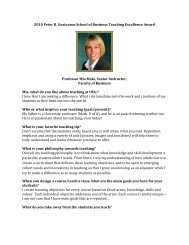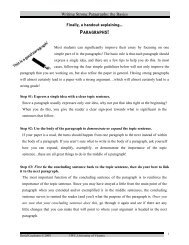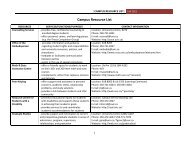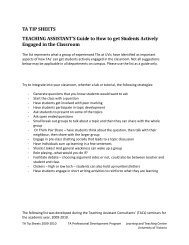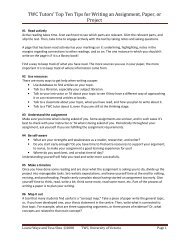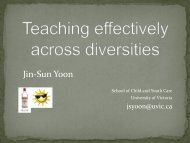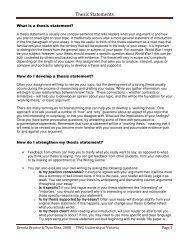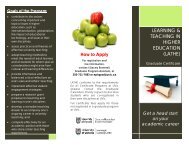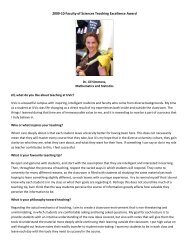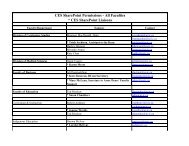C. Etmanski, Teaching CBR 2009-10 Workshop Series Final Report
C. Etmanski, Teaching CBR 2009-10 Workshop Series Final Report
C. Etmanski, Teaching CBR 2009-10 Workshop Series Final Report
- No tags were found...
Create successful ePaper yourself
Turn your PDF publications into a flip-book with our unique Google optimized e-Paper software.
Evaluation and Ongoing EngagementWe made a number of efforts to evaluate the series and promote ongoing engagement,namely: several iterations of a feedback/evaluation form, the creation of a Moodle Site,and a proposed focus group to evaluate the series. While these efforts were good ideasin principle, in practice, they were not the best use of energy for the following reasons:• In spite of ongoing encouragement to fill out the feedback forms (includingcreating a shortened version of the form, and explicitly passing out the form atthe beginning of each workshop) only 14 individuals filled them out for themajority of the workshops. Verbal feedback was very positive, but it seemspeople did not see the intrinsic value in providing written feedback. There wasone exception: the session on “Using the Arts in <strong>CBR</strong>” elicited 19 feedback sheetsalone (for a total of 33 forms for the whole series). I am not certain why thisworkshop elicited more responses, but I suspect it has something to do with thearts-based content, which elicited a different quality of engagement in general. Recommendation: While evaluation is, of course, an important component ofany outreach and educational effort, more thought is needed on creativestrategies for eliciting both formative and summative feedback, the intentionbehind the feedback forms, what could be done with the information collected,and the real time and effort required to undertake a thorough and usefulevaluation.• The feedback we did receive was either so pleasantly positive as to not behelpful (e.g. “thank you, I enjoyed the presentation”) or the dissatisfactionexpressed was preference-based, not particularly constructive, or sometimes notrelated to the overall mandate of the series (e.g. “we need tables to write on”when tables are intentionally moved to the side to create more space in theroom; or “can you include the time in the e-mail notices?” when the time wasalways included; or “invite members from the community, whether it is youth,ethnic minorities, etc.” when outreach beyond campus was not the purpose ofthis particular series, but is key to O<strong>CBR</strong> practices elsewhere).• One interesting comment, (which was addressed during the IndigenousApproaches to Research panel, but not as part of every panel) was:o “I would like a discussion of ‘colonialism’ in the academy – is <strong>CBR</strong> a shieldfor a new form of colonialism?” (See section on critical questions abovefor more thoughts on continuity between workshops.)• Because this was not designed as a regular UVic course format, setting up aMoodle Site required several face-to-face meetings and much back and forth e-mail correspondence with UVic’s IT help services. Once we finally managed to setit up, unfortunately it was not spontaneously used for ongoing conversationsC. <strong>Etmanski</strong> | <strong>Teaching</strong> <strong>CBR</strong> <strong>Workshop</strong> <strong>Series</strong> <strong>2009</strong>-20<strong>10</strong> | <strong>Final</strong> <strong>Report</strong> 9



